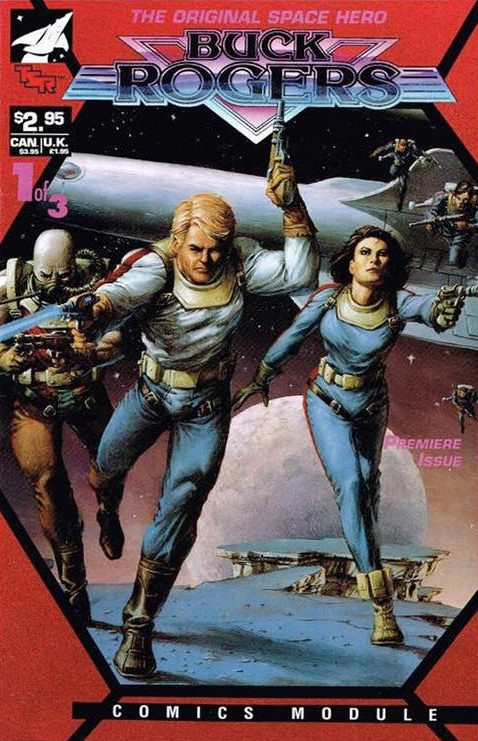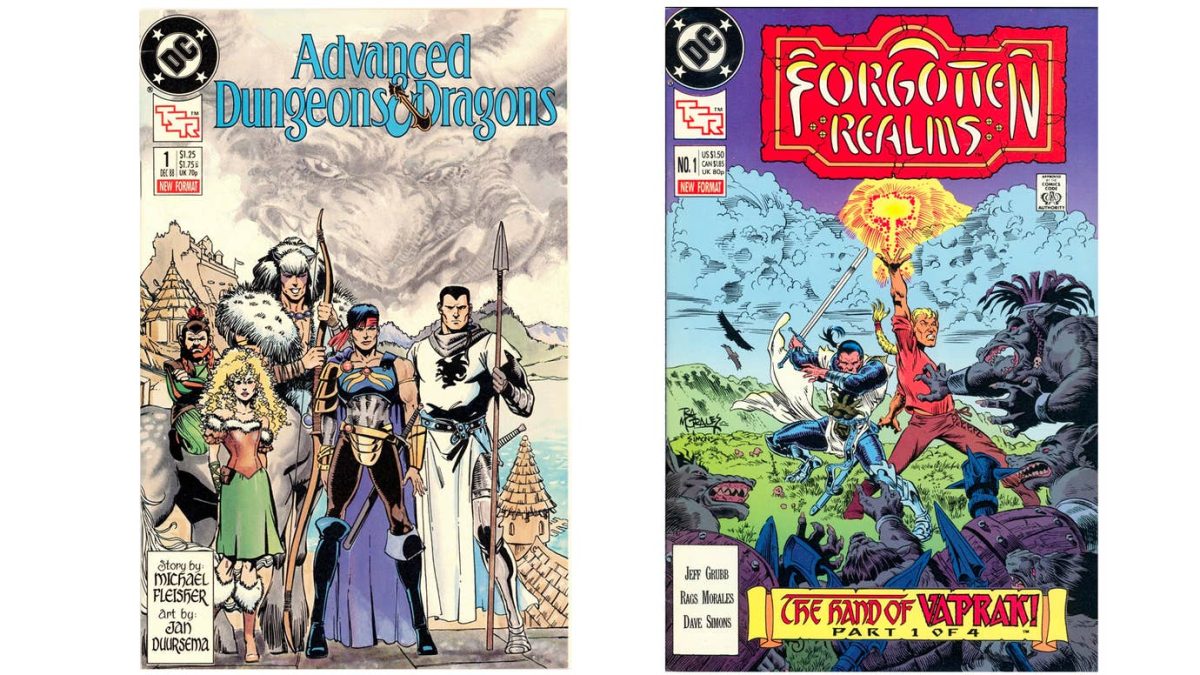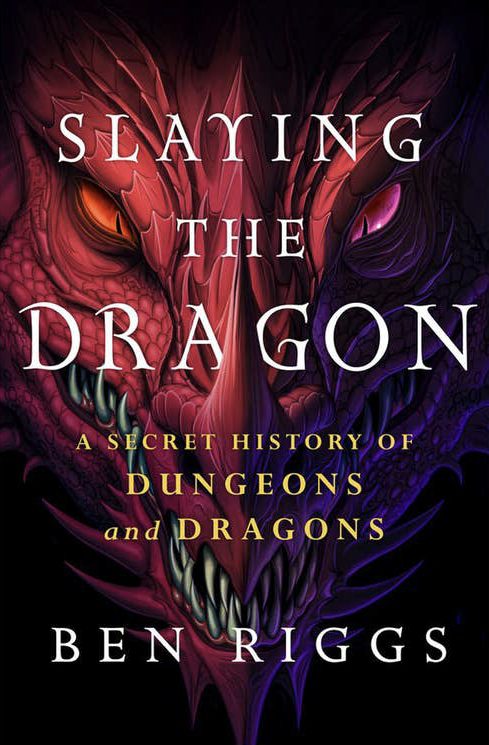The history of TSR, the original makers of Dungeons & Dragons is fascinating, and – quite often – head-scratching. But one of the most baffling decisions they ever made was entering the comic book world.
Watch the Video | Buy TTRPG Books and Accessories | More Game Content
You might not know this, but back in the late 80s, TSR licensed a bunch of their properties to DC Comics – AD&D, Forgotten Realms, Spelljammer, and more. These weren’t exactly Batman-level blockbusters, but they were selling pretty well. According to Ben Riggs’ fantastic book, Slaying the Dragon: A Secret History of Dungeons & Dragons (seriously, go read it!), these comics were selling about as well as Wonder Woman at the time. Not too shabby. TSR and DC had a pretty sweet deal going: a little money was being made, and new audiences were, theoretically, being exposed to D&D.
So, what happened? Well, this is where TSR leadership made one of those bewildering decisions that seemed to define the company’s entire existence. They decided to start their own comics imprint.
The Curious Case of TSR West: “Comic Modules,” Buck Rogers, and Bad Decisions
TSR actually brought in experienced folks to create a business plan for TSR West, a new division based in California that

would produce comics and chase after TV and movie deals. Sounds reasonable, right? Except for one minor detail: they couldn’t produce any D&D-related comics content because that was already licensed to DC. Maybe that should’ve been the first red flag, but hey, hindsight is 20/20.
Almost immediately, TSR leadership started chopping up that perfectly good plan. Instead of making actual comic books, the folks at TSR West were suddenly tasked with creating “comic modules.”
“What the heck is a comic module?” you ask? Well, DC was, understandably, a little ticked off about TSR‘s new venture and started looking into lawsuits for breach of contract. TSR‘s brilliant workaround? “No, no, no, these aren’t comic books! We just add a few pages with stat blocks, campaign setting material, maybe a mini-game. It’s a comic module! We’re not competing with DC!”
So What Did They Make?

So, TSR West got to work. They put out titles like RIP (a horror “comic module”), Warhawks (sci-fi time travel), and, yes, Buck Rogers. And that last one is key.
Remember those fairly successful D&D comics? DC canceled them. All of them. Why? As James Lowder, who was in the TSR book department at the time, revealed, “The root cause for the line cancellation was DC turning down the option to publish a Buck Rogers comic book.” (emphasis mine)
It turns out that the family of Lorraine Williams, who was the CEO and owner of TSR, also happened to own the copyright to to the classic sci-fi character Buck Rogers. DC didn’t want to do a Buck Rogers comic, so Williams, apparently, had TSR start its own comic book company to make it happen. This was just one of many short-sighted, self-serving decisions that plagued TSR.
Why “Comic Modules” Were a Bust
TSR West opened its doors around 1989 and was shut down by 1991. So, what went wrong?
- Poor Quality (Mostly): Despite having some genuine talent involved, like legendary comics writer Marv Wolfman, the “comic modules” just weren’t very good.
- Nobody Knew What They Were: Were they comics? Were they games? Retailers were baffled. Comic shops didn’t sell games back then, and book retailers put them in the game section with other TSR stuff, so comic readers never found them. Gamers, on the other hand, weren’t particularly interested in what looked like comics.
- The Unforgivable Sin: My personal favorite reason for their failure, as a long-time comics collector? Some of the game content in the modules required you to cut things out of the pages. It hurts just to think about it! You just don’t tell a comics collector to cut up their comics!
The More Things Change… (Hasbro/WoTC and the Legacy of TSR)
This whole TSR West debacle was just one of many poor corporate decisions that eventually led to TSR‘s failure, culminating in its acquisition by Wizards of the Coast in 1997. And honestly, I see some unsettling parallels between late 80s TSR and today’s Hasbro/Wizards of the Coast (WoTC).
There’s the obvious obsession with expanding D&D‘s IP into film and television. While that might be fine, it often stems from a fundamental misunderstanding of what D&D truly is. D&D is great, and it’s entered the mainstream in recent years, but it’s never going to be “Monopoly mainstream” due to its inherent complexity. And that might be why it hasn’t quite succeeded in other media.
Then there’s Hasbro/WoTC’s constant push that D&D is “under-monetized” and their focus on digital initiatives. They just don’t seem to grasp the true value of what they have.
The Biggest TSR/WotC Parallel
But the biggest parallel? The brand often seems more important than the people. TSR employed tons of incredibly talented game designers, authors, and artists – icons in the field! Yet, leadership often treated them as if they were a dime a dozen. They were underpaid, and artists couldn’t even retain their original work, which is standard practice. TSR seemed to think D&D made the people, but it was the people who made D&D.
We’ve seen a similar story with Hasbro’s layoffs in recenter years, which included many Wizards employees involved in D&D. And let’s not forget the OGL controversy, where Hasbro/WoTC tried to undercut the third-party publishers who have been instrumental in building the amazing D&D community we have today.
Dungeons & Dragons isn’t anything without the artists, designers, writers, third-party creators, Dungeon Masters, and players who make it and play it. It’s a collaborative effort, and forgetting that can lead to some truly boneheaded decisions.
What do you think? Do you see the parallels?
If you purchase any products linked on our website, we may receive an affiliate commission.


